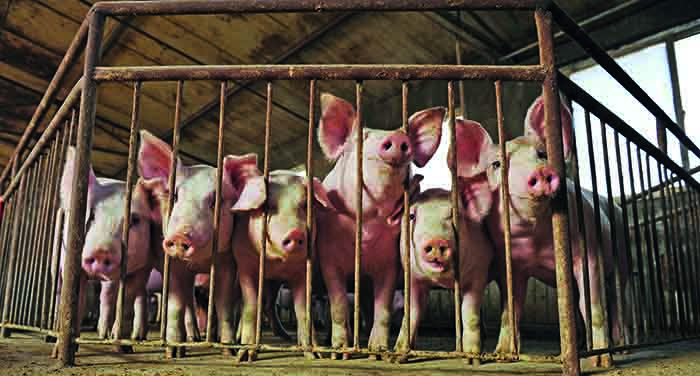Alistair Driver reports on how the spread of African swine fever is affecting the world’s biggest pig producing country
China’s pork industry has been rocked by the discovery and subsequent spread of Africa swine fever (ASF) across the entire country.
Around 100 cases have been officially confirmed since the first case was reported in August 2018, but that figure does not reflect the impact the disease is having on the world’s biggest pig producer.
More than 950,000 pigs have died or been culled as the virus has reached, at the time of writing, 28 of China’s 34 provinces.
In late-February, it was discovered for the first time, on a farm with 4,500 pigs, in Shandong, which produces approximately 7% of China’s pigs, a further blow for the industry and the authorities, which have struggled to contain the virus, despite a whole host of control measures.
Restrictions have been placed on the transport of live pigs, live markets have been closed and there has been a clamp down on swill feeding, a practice blamed for one-third of the first 68 outbreaks recorded. Spread by vehicles and workers without disinfection (46%) and the transport of live pigs and products (19%) were the other two main routes of infection, according to the UN Food and Agriculture Organisation.
The majority of cases have hit smaller producers lacking biosecurity, although one huge herd of 74,000 pigs has also been affected. Before a recent spate of outbreaks, the authorities suggested they were getting the disease under control.
Many experts have questioned this, given the lack of biosecurity on many of China’s smaller farms and the high density of pigs in many parts of the country.
“It seems likely that China will be unable to contain the spread of ASF in the coming year, meaning further culling can be expected,” AHDB analyst Bethan Wilkins said.
The regularity with which the virus is turning up in food, for both pig and human consumption, reinforces this view. One major Chinese food manufacturer was forced into a product recall after the virus was found in dumplings last month.
It is also turning up in port checks by China’s neighbours, who are on high alert. Japan discovered an infected sausage in the luggage of a traveller from China in December, while Taiwan has found the virus in 20 samples out of 928 tested at airports since August. All came from China, except one recently from Vietnam, where ASF was detected for the first time in February, with outbreaks reported in four provinces near the Chinese border.
While nearly a million pigs culled is not yet a major indent into China’s 450 million- strong pig herd, the impact has been much wider, with disruption to live transport creating pork surpluses in some areas, particularly the north, and shortages in high demand areas in the south.
The average wholesale price of pork in China in January was down 15% year-on- year, according to Government figures, as producers rushed their pigs to the market.
But this is set to change. Tang Ke, from China’s agriculture ministry, said pig numbers were down 5% year-on-year overall in December, with sow numbers down by 8%. As a result, Chinese pork prices are ‘very likely to rise’ in the second half of 2019, he said, urging producers to ‘replenish their herds in a timely manner’, Reuters reported. While supplies are currently ‘sufficient’, he described the battle against the disease as a ‘protracted war’.
Rabobank forecasts that pork production in China could drop by as much as 20% in 2019, while Global food consultancy Gira forecasts a 7% decline. This is expected to lead to a strong rise in Chinese domestic pork prices and higher import demand, which is likely to absorb any ‘surplus’ product on the global market.
However, the shortfall in Chinese pork supplies and higher prices will also result in Chinese consumers switching to other meats and proteins, Gira added.
Ms Wilkins highlighted the potential export opportunities for the UK and others. With China producing over 50 million tonnes of pig meat a year, a 5% fall in production, would equate to a supply gap in excess of 2.5mt. China imported around 2mt of pork and offal in 2018.
“But in reality, global supply availability and competition with other meats is likely to limit the level of trade,” she added.




